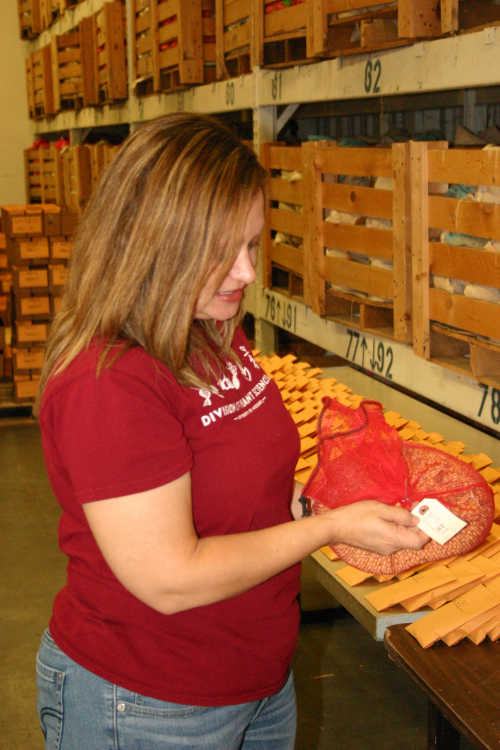NEIGHBORS........Women in Agriculture Second in a series

For the past 19 year, she has been a research associate at the University of Missouri Fisher Delta Research Center, now she is a Senior Research Associate in the soybean breeding program, and works with the soybean breeders.
Melissa Crisel, of Puxico, makes her drive to work two maybe three times a week. “With the type of work I am involved with, I spend most of it working on the computer recording her findings. In today's computer and digital age, I am able to work from my home office,” says Crisel.
Although her parents were not into row crops, they did raise horses on their farm. Upon graduation from Puxico High School, she received her Bachelor of Science in Agriculture from Murray State University, and while at work at the Delta Center, she completed her Master of Science in Agriculture from Arkansas State University. She was able to do most of her classes through the ITV programs available the Southern TCRC Center in the Delta Center.
“We develop new varieties of soybeans. From the get go of when you go to the field and our breeder would choose different combinations to mate male and female plants. We will actually go the the field, cross two different male and a female. With a very small pair of tweezers will take the pollen and pollenate the female. Then we will begin with that one seed. We will send that seed down to our winter nursery in Costa Rico. We work with another nursery in Porta Rico,” she explains.
“That would the increase our seed two generations. There are two growing seasons in those area as opposed to our one growing season up here. Basically, we send our seed and data and get two years working in one year. It comes back, and then the breeder will plant them in short, progeny rows. Then will allow the breeder will then make selections on how they look, type of yield they have. With that, selection will be made and they row into a preliminary yield tests, then advanced yield tests. Right now, there is about 12 folks that work within this department, both full and part-time,” she further explained.
As far as herself, she does a lot of supervising and pedigree management. So, from the beginning of which seed is crossed with which seed, there is a long catalog process you have to keep up with.
“When we get our seeds back, we would end up with about 20,000 lines of short progeny rows, and they will be a different pedigree. We have to keep up with where they are, how much seed there is, flower colors, just a lot of agronomic traits that have to be recorded. When there are moved forward, there will be 16-18,000 yield test plots. That's another set of individual lines that has to be managed and when the data comes in, all of this information is stored in the computer with a soybean software program called Agri-base,” she added. “So the bulk of my work is with the management process, but I still need to got out and ride with the planter. Our planter is not your typical planter, it may be one third the size and may cost just as much as a typical farmer would get. Our whole system out here is about 150 acres as opposed to some of the 500 plus acres surrounding us.”
When she started here in 1998, the soybean lab was still using the MS Dosh program, and another program called Paradox. There is still stored upstairs books and books and books where all of the information I do now was all hand-written in those books.
The soybean lab itself has also evolved as different breeders were hired on. “When I started, Satish “Sam” Anand was still the breeder and had been for about 20 years. After he left, Grover Shannon was there hired as a breeder. He then left to work for a private company as a breeder, and then decided to get back into educational side. Although he retired last year, he still comes in about once a week to assist in the transition between him and the new soybean breeder, Pengyin Chen,” Crisel said.
“Additionally, then we had a third of the plots that we have now. So over the last 20 year, we have more than doubled,” she added. All this leads her and her co-workers in how they can best serve the American farmers.
The best part of her job? “Helping the farmers,” she said without hesitation. “Also, within the farming industry, things are continuously changing throughout the year, so I am always doing something different.”
After graduating from Murray, she had worked for a farm appraisal office, then a grain elevator office, where a former Stoddard County Extension agent pushed me in this direction. Even though Puxico is about an hour and fifteen minutes from here, at the time she thought she would try it and work for about five years, then move on. This is such a great place to work at and 20 years later still working there. Now, there are four within the same building that come in from Puxico.
She tells those that may be interested in pursuing a career in this area to go to school and get at least a four year degree, a masters is even better. Also, do an internship in the area you are interested in.

